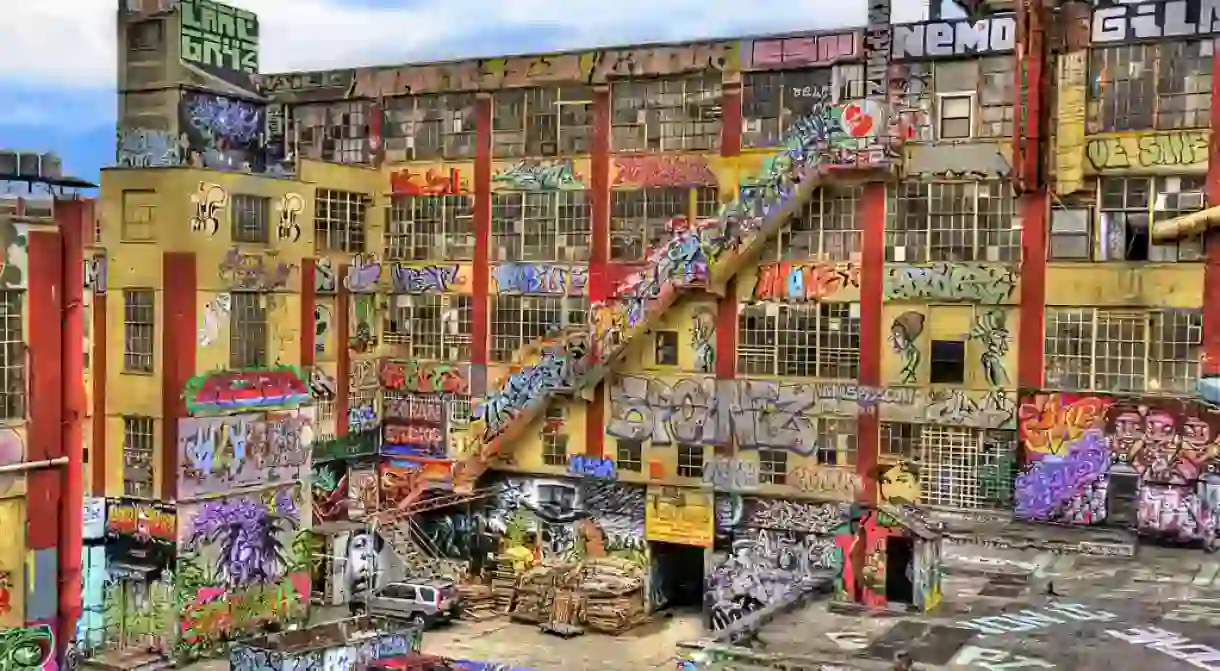An Unprecedented Lawsuit in New York May Determine the Rights of Street Artists

An art form deeply woven into the fabric of New York, graffiti has long served as an integral component of the city’s aesthetic culture. So far, its place in the widening sphere of fine art has been left undefined—but a current lawsuit pitting the street artists responsible for 5Pointz, a veritable real estate canvas in Long Island City, against the developer who owns—and subsequently destroyed—the site may finally establish graffiti’s legal place in the five boroughs and beyond.
A score of street artists in New York City are fighting the good fight against a real estate developer responsible for the ruination of 5Pointz, a street art mecca in Long Island City, Queens. The case went to federal court this week, where the rights of street artists to preserve their work versus developers who own the property on which the work was painted will continue to be heatedly debated until the jury reaches a decision. The outcome of the trial will be of paramount significance to street artists around the city.

The power struggle for 5Pointz began 20 years after developer Jerry Wolkoff gave street artists permission to paint and tag his derelict property in 1993. The buildings, which had fallen into a state of disrepair, were rapidly revived by local graffiti artists who transformed the neglected real estate cluster into a beloved and long-standing icon of street art in the borough.
All was well until 2013, when Wolkoff made a plan to demolish the buildings for a forthcoming condominium project in their stead. Under the cover of darkness, he painted over two decades of art without a word of warning. In the morning, locals awoke to find 5Pointz completely coated in white paint—a decision, Wolkoff told The New York Times, hemade to spare the artists the “torture” of witnessing their work’s otherwise slow demise.
Needless to say, Wolkoff’s choice, cloaked in empathy, was hardly enough to quell the anger of the artists responsible for the evolution of 5Pointz, as well as street artists at large who saw his act as an acute affront to the value of their art form. Later that year, they sued Wolkoff for violating the provisions of the 1990 Visual Artists Rights Act (VARA), by which their work was protected under copyright.

The Brooklyn-based lawsuit now underway is the first of its kind to reach federal court. While VARA cases unavoidably pop up, they’re typically settled quickly and quietly with no publicity or universal implications. This case is a rare one, and according to artnet News, the presiding judge commented on how “lucky” the jury is to watch such an unusual deposition unfold. Attorney Barry Werbin from the law firm Herrick & Feinstein noted street art’s recent rise in popularity and value—”all untested issues,” he said, “which is why the case is so fascinating.”
Werbin predicts that a significant part of this case’s outcome will be predicated on the plaintiffs’ (consisting of curator Jonathan Cohen at the helm of a group of 20 artists) capacity to argue how and why their work is of “recognized stature.” Should they successfully prove their worth, their protection under VARA would ensure compensation for the loss of their work. The catch? “Recognized stature” is not so easy to define.
While artists were called to the stand to systematically prove how their work contributed to the burgeoning culture of Long Island City, defense attorney David Ebert argued that, due to the very nature of street art, none of them were likely to have sold any of the works, rendering Wolkoff’s decision to destroy them far less life-altering than suggested.
Ebert also noted that street artists consistently painted over one another’s work. “They call it bombing, and the next artist goes over someone else’s work,” Wolkoff explained. “They painted over their own work continually, and it goes on for years. That’s the idea of graffiti. There were tens of thousands of paintings there, over the years, and they’d last for three or six or nine months.”

What will complicate this case for the artists is an indisputable stipulation that Wolkoff openly clarified 5Pointz’s temporality. The site was never intended to become a preserved city icon, which the artists were admittedly aware of.
Regardless, they’re going to bat for all the paintings Wolkoff stealthily destroyed. According to a Harvard Law School guide to VARA: “The legal remedies available for a violation of moral rights…range from a $500 minimum to a $20,000 maximum, increasing to $100,000 for willful infringements.” It could be argued that, had the artists been given time to rescue their works, they might have sold various pieces or donated them to exhibition spaces on the basis of their considerable cultural value.
Ultimately, the artworks that enlivened Wolkoff’s buildings are gone, and no court decision—not even a ruling in the artists’ favor—will resurrect them. But should the artists win the case, they’ll likely be compensated enough to move forward, comfortably, with their craft. The case will surely have implications for New York City street artists beyond the circumstances of 5Pointz’s demise.













